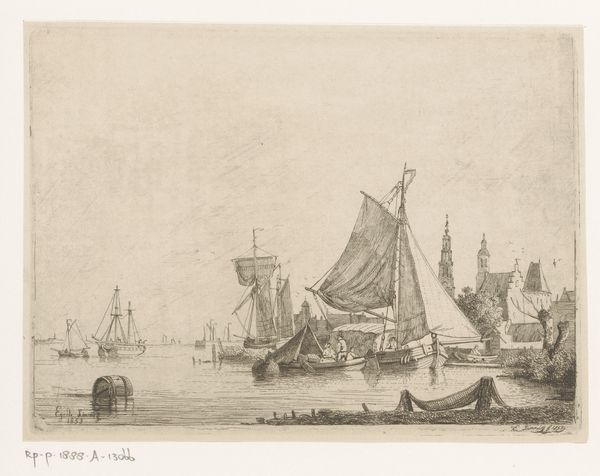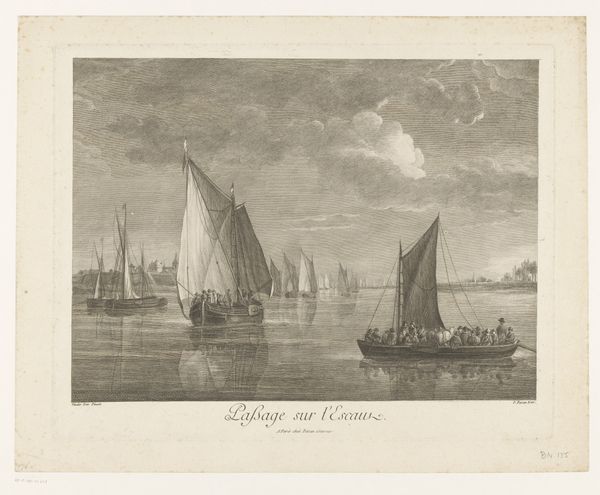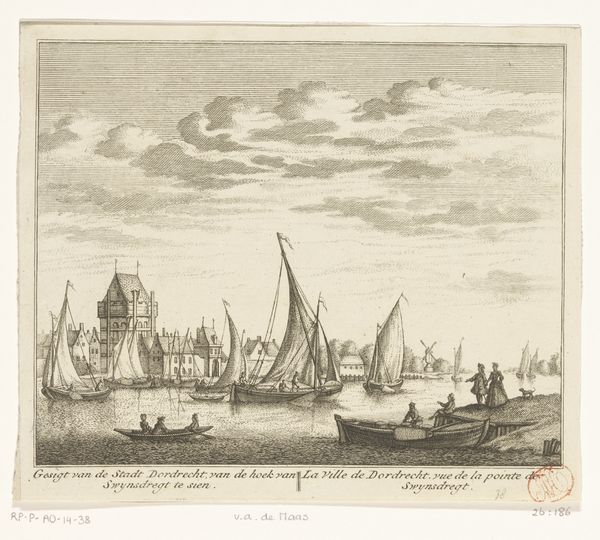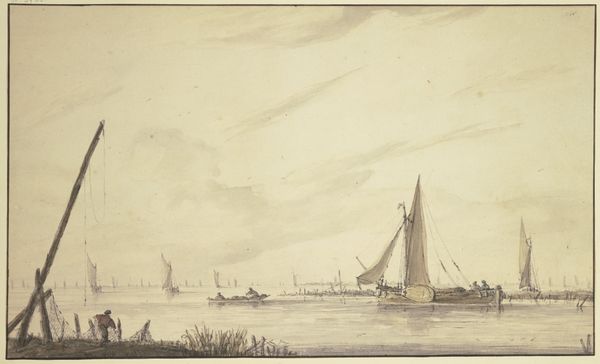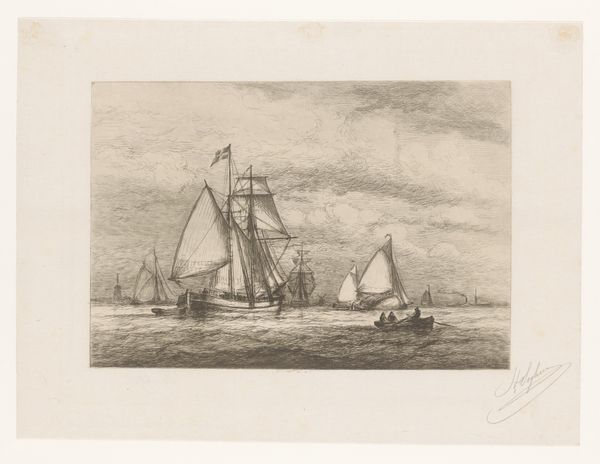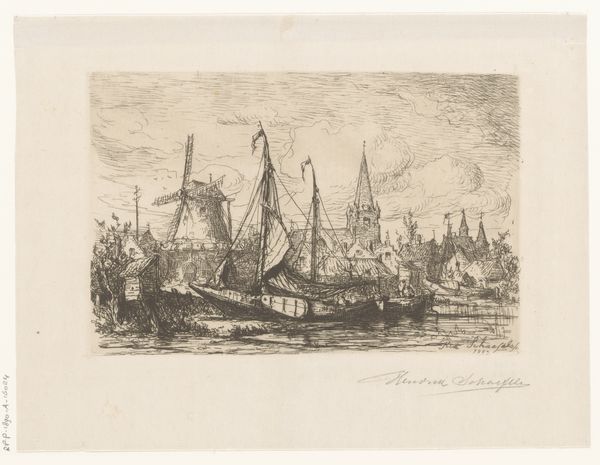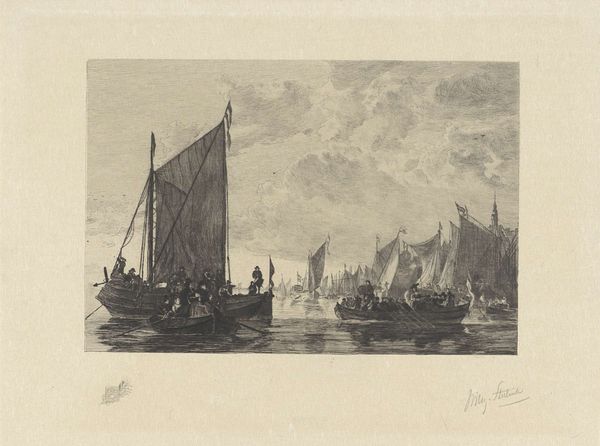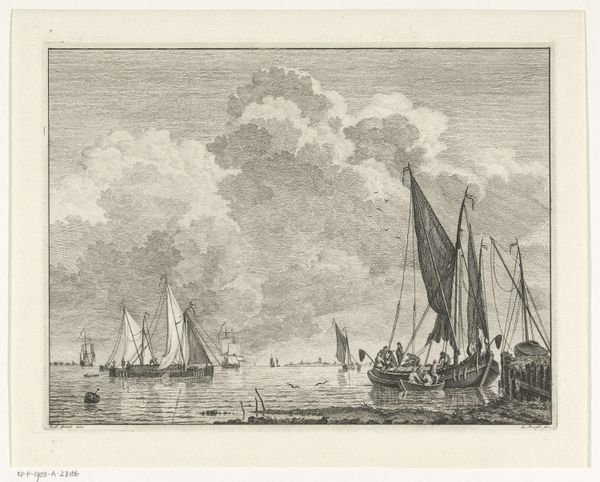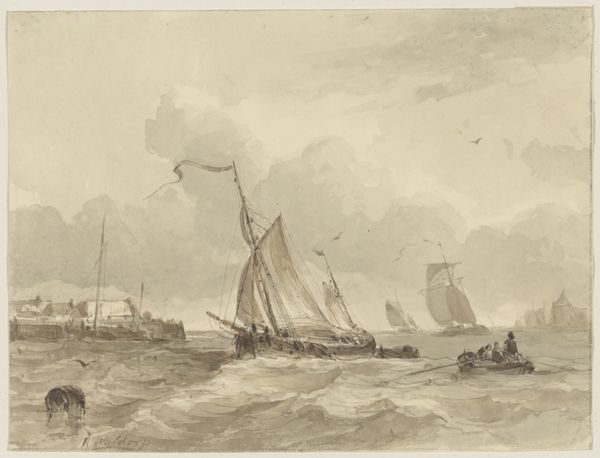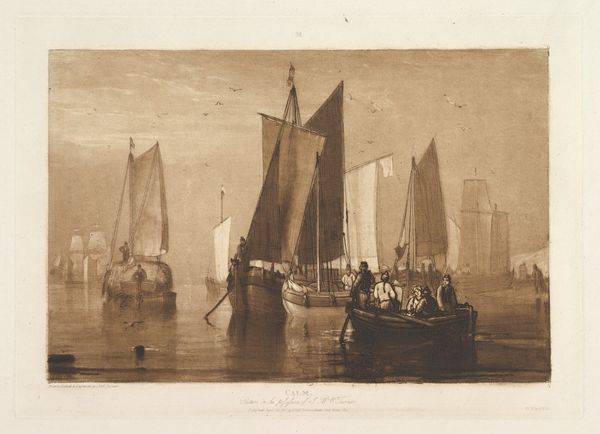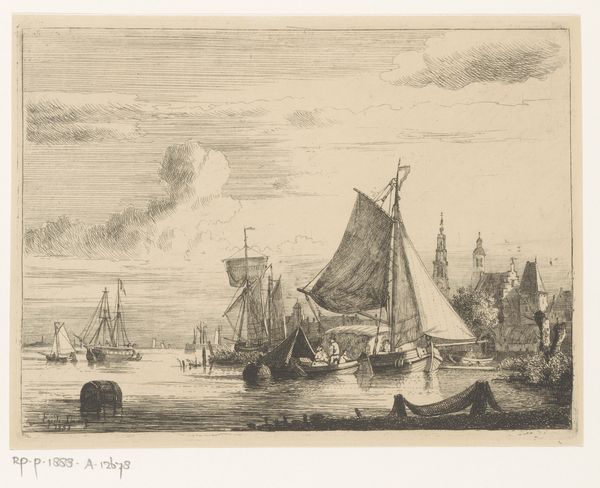
#
pencil drawn
#
photo of handprinted image
#
light pencil work
#
photo restoration
#
pencil sketch
#
old engraving style
#
etching
#
pencil work
#
watercolour illustration
#
watercolor
Dimensions: height 240 mm, width 360 mm
Copyright: Rijks Museum: Open Domain
Henri François Schaefels made this view of Zaandam with boats in the foreground in the 19th century using etching. Etching involves coating a metal plate with a waxy, acid-resistant material. The artist then scratches an image into this coating, exposing the metal beneath. When the plate is submerged in acid, the exposed lines are eaten away, creating grooves. Ink is then applied to these grooves, and the plate is pressed onto paper, transferring the image. Look closely and you can see how the etched lines vary in thickness and depth, capturing the texture of the water, the billowing clouds, and the intricate rigging of the ships. The process allowed Schaefels to capture a wealth of detail, from the individual planks of the boats to the distant windmills dotting the horizon. The material conditions of the etching also speak to the changing times. As an intaglio printmaking technique, etching was a more efficient means to produce images. The wider distribution of prints like these facilitated a booming art market, yet it also displaced traditional forms of craftsmanship. So, next time you look at an artwork, consider the materials, the making, and the context.
Comments
No comments
Be the first to comment and join the conversation on the ultimate creative platform.
